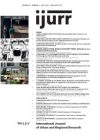Since the classic work of Henri Lefebvre and David Harvey, the ‘secondary circuit of capital’ has been a focal point for debate among critical urban scholars. Against the background of contemporary debates on financialization, this article investigates the institutional and political roots of the subprime mortgage crisis. Empirically, the article situates the current turmoil of the US mortgage sector with reference to a series of ad hoc legal and regulatory actions taken since the 1980s to promote the securitization of mortgages and expand the secondary mortgage market. Securitization is a process of converting illiquid assets into transparent securities and is a critical component of the financialization of real estate markets and investment. Specifically, I examine the crucial role played by the US Treasury Department’s Office of the Comptroller of the Currency (OCC) and the Department of Housing and Urban Development (HUD) in creating the polices and legal‐regulatory conditions that have nurtured the growth of a market for securitizing subprime loans. Theoretically, the article examines the subprime mortgage crisis as an illustration of the contradictions of capital circulation as expressed in the tendency of capital to annihilate space through time.
Details
Written by:
KEVIN FOX GOTHAM
Digital Object Identifier (DOI)
10.1111/j.1468-2427.2009.00874.x
About DOI
Read full article as PDF
Read full article as HTML
See the references for this article
